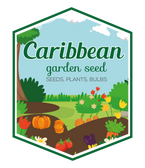
Comfrey Seed, Non-GMO HERB
- Get free shipping to lower 48 states on orders $54.95+ (Most Items), excluding live plants, plant bulbs, and black plastic nursery crate.
- Most orders are processed by the next day !
- Safe Seed Pledge
- Select your desired size and/or color from the available options.
Comfrey (Symphytum Officinale) - Comfrey is a healing herb native to Asia and Europe, introduced to North America by English immigrants for medicinal use. Comfrey grows up to 60" tall with lance-shaped leaves and bell-shaped purple flowers blooming May-September. Comfrey, even when grown from Comfrey seed, has a deep root system with thick dark-colored roots. Comfrey may have violet, pink or creamy yellow flowers.
100% open pollinated
heirloom
non-hybrid
and Non-GMO
True Comfrey Seeds (Symphytum officinale) Organic seeds!
Comfrey aids wound healing with astringent, antifungal, and antibacterial properties. It also provides essential nutrients and chemicals.It has been recently learned that it can be a carcinogenic when taken internally, but it is still used as a topical treatment for skin irritations, cuts, sprains and swelling.
Medicinal Uses for Comfrey
Comfrey has long been used as a cure by Gypsies and peasant peoples, and has an ancient reputation as a mender of broken bones. In her marvelous book Herbal Healing for Farm and Stable, Juliette de Bairacli also recommends it for uterine and other internal hemorrhages and for the healing of wounds. British Gypsies, she writes, feed the roots to their animals as a spring tonic. (Please Note: Comfrey is toxic to the liver for both humans and livestock and should not be taken orally or used on open wounds.
When To Sow
Comfrey seeds can be planted in either spring or autumn.
For optimal growth, plant your Comfrey seeds in spring after the last frost date in your region. Consider sowing them in a cold frame, undercover, or other unheated growing area for even better results.
Comfrey seeds require cold stratification, which can be achieved by storing them in a refrigerator for a month or two in moist soil or a paper towel before planting.
How to Sow Comfrey Seeds
- Fill trays, punnets or jiffy pots with a good quality seed-raising mix, or use soil starter pellets.
- Sow seeds 5mm deep.
- Keep soil moist but never wet or dry.
- Seeds should germinate in around 25-30 days at a soil temperature of 20-22°C.
- Transplant seedlings to the garden once they have their first true leaves and are large enough to handle (usually 5-10cm tall).
- Plant out, spacing plants 60cm apart.
Comfrey plants can be difficult to eradicate once they are established in the garden. Choose a permanent position in a garden bed or grow them in containers to prevent them spreading into unwanted areas. Comfrey plants commonly self-seed in the garden. Self-seeding plants drop seeds onto the soil at the end of the season that may germinate and grow without help the following season. Choose a position where new plants will be welcome. If you do not want comfrey to become established in your garden, deadhead plants before they can drop seed or grow them in containers.
Herb Specifications
Season: Perennial
USDA Zones: 4 - 9
Height: 60 inches
Bloom Season: Late spring through summer
Bloom Color: Purple
Environment: Full sun to partial shade
Soil Type: Rich organic soil, pH 6.0 - 7.0
Planting Directions
Temperature: 60 - 70F
Average Germ Time: If germination does not occur after 14 - 21 days a cooling period of 2 - 4 weeks is recommended
Light Required: Yes
Depth: 1/8 - 1/4 inch deep
Sowing Rate: 1 - 2 seeds per plant
Moisture: Keep seeds moist until germination occurs
Plant Spacing: 36 inches
Harvesting: You will be surprised how quickly Comfrey grows. When the flowers appear take a cut. Use a pair of shears and cut about 20cm (6in) from the ground. Comfrey has little hairs on the leaves, which can irritate, so wearing gloves is recommended.
In the second year your comfrey patch starts to really pay off. In the spring it will leap back from its winter sleep. Your first cut will get the spuds off to a good start. After that you should get at least a further three or four cuts.
If it's the roots you're after, those can be dug in the autumn.
LET OUR CUSTOMER SPEAK FOR US

![[Seeds] - Caribbeangardenseed](http://caribbeangardenseed.com/cdn/shop/files/gift-card-gift-card-1_1024x1024_dfa857db-9150-4315-a362-7f0bb3fb9c47_60x28.png?v=1722895789)








